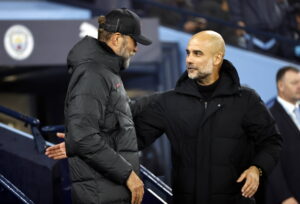Going into the Boxing Day fixtures, Norwich City were on a five-match winning streak and nine points clear of Watford. Daniel Farke’s men had grown increasingly dominant in their high-possession style of play. The reemergence of Teemu Pukki and Emiliano Buendía, whose talents faded over the course of their Premier League stay, has further bolstered their prospects of promotion.
The Hornets went into the week of Boxing Day on the brink of turmoil. The Pozzo family decided to sack Vladimir Ivic. Relatively-unknown Xisco Muñoz replaced the Serbian, which many fans were not thrilled about. Muñoz’s optimistic, passionate demeanour quelled some unrest, but the upcoming match against Norwich seemed destined to be a rude introduction.
Watford Defeat Norwich City in Xisco Muñoz Debut
Muñoz’s promise to play exciting attacking football, mainly through the wings, came to fruition. The Canaries dominated possession, controlling the ball for 65% of the match. But, when it comes to quality attacking possession, Watford were the commanders of the pitch.
The first-half promptly displayed the morale boost at Vicarage Road. The complacency that took many of Watford’s previous performances captive no longer existed. Still, Norwich looked to keep hold of the ball as much as possible and did so decently. However, Farke’s men scarcely troubled Ben Foster, as he only dealt with half-chances from distance.
The breakthrough came in the 39th minute. Soon-to-depart Étienne Capoue picked the ball off deep in the Hornets’ defensive half before surging forward and releasing Andre Gray. Gray danced with the ball halfway inside the Norwich half to wait for the rest of the Watford cavalry to arrive. He fed the ball back to Capoue who then found Hornets’ star Ken Sema. Sema made one of his signature runs to the byline, before firing an inch-perfect cross to Ismaïla Sarr who had the entire goal to his mercy. An Adam Masina last-ditch slide tackle on Pukki in the dying embers preserved the three points for Muñoz.
How the Hornets Stung the Canaries
Defensive Dissuasion
Muñoz fielded a simple 4-4-2 formation, pairing Troy Deeney and Gray in the attack together. Farke deployed his typical 4-2-3-1. The instruction was to, as per usual, methodically move the ball around to create openings. To counter that, the Hornets set up in an eight-man defensive block (two blocks of four). When defending, Deeney dropped a bit deeper to make a 4-4-1-1 defensive setup. This is a stark contrast to the all-hands defending approach Ivic liked to demand.
Still, the block Muñoz asked for was not special nor unconventional. The tweak made to deal with Norwich’s wide threat was noteworthy. As is common, the wide-midfielder always marked their opposite number, and the corresponding full-back closed the gap between themselves and the centre-backs. However, Capoue and Tom Cleverley also tucked in closer to the defenders when the ball went out wide to be better equipped to defend a cross. When the wide players cut in, the closest central-midfielder dashed forward to prevent a delivery into the box.
The attacking outlet provided by Deeney and Gray made it so Norwich could not commit too many men forward. They struggled to get by Watford’s deep-lying block, which was more-than-effective at preserving some attacking threat. The match, in the defensive discussion, resembled a Jose Mourinho (as Muñoz) versus Jurgen Klopp (as Farke) encounter. The only difference is the Hornets maintained an attacking mindset throughout the ninety minutes.
Augmentation of Attacking Play
When Norwich tried to build out from the back, the two Hornets strikers would press high. Watford almost doubled their lead on multiple occasions by doing so.
Most of Watford’s chances came from wide play. Muñoz, a winger during his playing days, made the instructions clear for Sema and Sarr – to feel free to be creative and attack. Furthermore, the full-backs, despite playing in a four-at-the-back formation, still acted as wing-backs when attacking. This forced Norwich’s defensive block to be stretched, as well as gave Watford extra numbers in the box. The first goal of the Xisco Muñoz Era coming from a cross is fitting.
But, even when Watford committed many men forward, there were still always at least three players back to prevent the counter-attack. The disallowing of counter-attacks helped Watford fall back into their blocking without getting stretched. Muñoz did get the true-attacking football he asked for, yet he did not sacrifice defensive integrity.
Overall, the Canaries were not broken down due to a gulf in quality. The Hornets did not utilize ultra-complex tactics either. The perfect medium between defence and attack was reached. Through defensive discipline and forcing Norwich’s defensive shape to uncomfortably shift, Watford laid down the blueprint for toppling the current Championship table-toppers.
Main Photo






